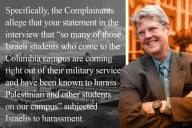You have /5 articles left.
Sign up for a free account or log in.
While facing a skeptical Senate committee during a hearing in July, Mark Emmert, president of the National Collegiate Athletic Association, insisted that the NCAA would soon have a way to finally adopt several long-discussed reforms addressing how college athletes are treated.
“I believe we will end up in the right place in a couple of months,” Emmert said at the time.
He was referring to a change in NCAA governance that would grant a greater level of autonomy to the five wealthiest conferences. In August, the Division I Board of Directors gave that autonomy to the 65 member universities of the Atlantic Coast, Big Ten, Big 12, Pacific 12, and Southeastern Conferences, granting them the ability to make their own rules concerning issues such as allowing full-cost-of-attendance stipends, offering four-year scholarships, and providing better health care for athletes.
But nearly two months later, lawmakers, college athletics advocacy groups, and -- to a lesser degree -- even members of the five conferences remain skeptical that granting autonomy has cleared the path for any real change. And some worry that the changes in governance may just push the NCAA even further from its stated educational mission, prioritizing more profitable revenue sports over the non-revenue sports that most align with the association's theoretical amateurism model.
Last week, the Coalition on Intercollegiate Athletics – an alliance of 63 faculty senates at Football Bowl Subdivision institutions, more than half of which are in the big five conferences – sent a letter urging Division I presidents and chancellors to call for a vote to override the board’s decision. The only way many of the 65 universities will be able to afford new benefits for athletes will be to redirect money from non-revenue sports, the coalition argued.
At least 75 Division I presidents must agree to call for an override vote by Oct. 6 in order for one to take place, though overturning the decision is still believed to be unlikely.
"It has become clear in the month since the restructuring model was announced that for the vast majority of Big 5 schools -- those whose programs do not generate profits -- the costs of the new athlete benefits are likely beyond their means without resorting to cuts in precisely those sports that most clearly reflect the academic mission of the NCAA," the COIA wrote.
The Drake Group, another faculty-led group focused on sports issues, released a similar call to action earlier this month and cited similar concerns.
Along with the now-familiar refrain that the autonomy would increase an already-widening gulf between higher- and lower-resource institutions, the Drake Group also stated that funneling more resources into basketball and football would come at the expense of non-revenue sports. In an August report, Moody’s Investors Service estimated that adopting the autonomous conferences' proposed changes would create an additional $3.5 million in expenses per institution.
Colleges outside the five conferences will not have to adopt those same rules, but they will be allowed to if they choose and may feel compelled to do so if they wish to remain competitive with the institutions in the Big 5 leagues.
"The power five conference members may be well equipped to absorb incremental costs, but other universities with less profitable programs will become less competitive," the report stated. "The cost-of-attendance stipend, for example, will give the powerful conference members an additional recruiting tool that others will lack.”
Who Can Afford the Reforms?
Not all of the 65 colleges that make up the five wealthiest conferences are similarly well-equipped, either. In the Big 12, for example, the sports program budgets of the high and low spenders are separated by at least $80 million. Though it is touted as one of the first reforms the newly autonomous conferences will tackle, not all of the Big 5 league colleges even agree on providing full cost-of-attendance stipends. Some in the Atlantic Coast Conference, which includes more private institutions than the other leagues, favor a need-based stipend. There's also disagreement about whether the new benefits should be provided to all college athletes or just sports like football and men's basketball, the teams that actually bring in the theoretical revenue that would be shared.
While some colleges have focused on football and basketball, others have focused more broadly on all so-called head-count sports, which include women's sports like tennis, basketball, and volleyball.
Even then, the sheer amount of scholarship players on football teams could cause such efforts to run afoul of Title IX of the Education Amendments of 1972. Further complicating matters, a recent antitrust ruling against the NCAA would allow for revenue sharing specifically with men's basketball and football players.
Kirk Schulz, president of Big 12 member Kansas State University, said the O'Bannon ruling could affect what the Big 5 institutions decide, saying that "women's sports should have high-quality coaching facilities, but then we have this court decision saying that we should have extra money going to men's basketball." Schulz said that while he’s supportive of the idea of autonomy, he doesn’t think the voting process “is going to go as smooth as everyone thinks it is.”
“The $120 million programs are going to have a different perspective than the $50 million programs," Schulz said. "I think we’re in for a rocky road. We also have to realize and continue to realize that we all live in a big tent together and we have to make sure the rest of Division I feels good with what we're doing. We can't have a big stick, start waving it around, and then wonder why everyone’s pissed off."
Indeed, Division I colleges outside the "Power Five" remain particularly apprehensive of the changes in governance, and the motives behind it. Patrick Harker, president of the University of Delaware and one of just two Division I board members who voted against autonomy, expressed exasperation at how NCAA governance as a whole is organized. The association's governance structure is designed around football, a sport that generates revenue only for the highest-profile programs. It is the leagues, not the NCAA, that control the big-time football playoff.
"Governance is designed around FBS football," Harker said. "What's the one sport that contributes the least to the NCAA? FBS football. It's the one sport that literally contributes nothing and actually takes money away when you calculate the cost. We designed the governance around that."
'Created a Monster'
Peter Roby, athletics director at Northeastern University, said even if the five conferences are able to pass reforms like providing full-cost-of-attendance stipends to football and basketball players, the move is not an altruistic one. Instead, Roby said, the reforms are an attempt at solving problems that wealthier conferences themselves created.
Those colleges have created a monster, he said, and now they have find a way to feed it.
“Part of the reason people feel they have to provide more in terms of cost of attendance is because kids are participating in university athletics year-round,” Roby said. “They’re not going home for the summer like they used to. They’re on campus, in class, in the weight room. If these schools hadn’t been so hell-bent on keeping such a competitive advantage, maybe these kids could be home working and putting money in their pockets."
The time commitments of college athletes has been an issue that the Knight Commission on Intercollegiate Athletics has pushed colleges to address for more than a decade, said Amy Perko, the commission's executive director. Perko said that the commission hopes autonomy will allow the five richest conferences to revisit some of its past recommendations.
"We recommended in 2001 and again in 2010 that colleges reduce the time demands on athletes, but it never gained much traction at all," she said. "There was never a legislative proposal. There really is opportunity here for some really different approaches. But it's not yet clear what direction the Big Five leaders are going to go in. It certainly could take an intervention outside the current structure to develop remedies that will support college athletics in the future."
If the five conferences can't make autonomy work in the way Emmert said he hoped it would, that intervention could come from the U.S. Senate. At the July hearing, Senator Jay Rockefeller, who chaired the meeting, pointedly reminded the NCAA that the Senate Committee on Commerce, Science, and Transportation had jurisdiction over college sports.
In a letter sent to the presidents of the 65 colleges that make up the "Power Five" conferences earlier this month, Rockefeller and two other senators wrote that they were "increasingly frustrated with the lack of meaningful progress by the NCAA and its member institutions." The senators asked that the colleges respond to a questionnaire about the colleges' newly granted authority by Oct. 17.
“We intend to monitor your progress to see whether the very schools and conferences that are often blamed for much of the problems plaguing intercollegiate athletics today effectively utilize the new flexibility you have been granted to implement meaningful reforms to better protect student-athletes,” the letter reads.








